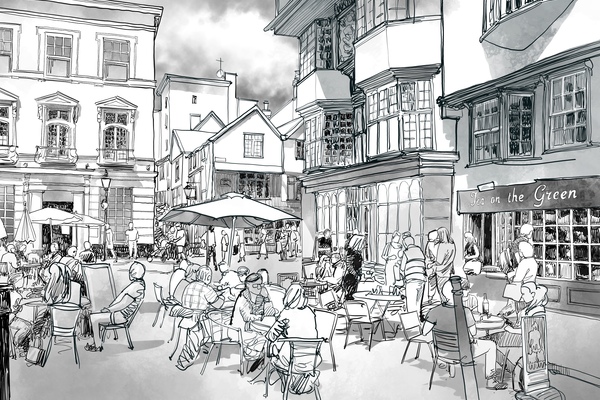Candidate: Exeter
Location: England
Category: The European City of the Year Award
Year: 2023
Other finalists in this category: Amersfoort, Netherlands (winner) and Estepona, Spain
Judges' comments:
“Exeter and its citizens have a strong identity, sense of purpose, and direction for their future. The city has transformed in recent decades into a thriving modern place with strong emphasis on education, culture, and commerce – cementing its attraction in terms of liveability, intellect, and social value. Its uniquely strong relationship with its physical natural setting and its good connectivity have been major influences on Exeter’s success, and it is continuing to invest in ways to build upon this and nurture its social value and capital.” - Tony Duggan AoU, European City Co-Lead Assessor
Introduction
Exeter is the administrative and historic county ‘town’ of Devon, Southwest England. It is located on the river Exe, approximately 36 miles (58km) northwest of Plymouth, and 65miles (105km) southwest of Bristol. Exeter is one of the best examples of the historic English town, which developed from a Roman-British centre to a medieval cathedral city and county town and now is an administrative and service centre for an extensive region. It has an area of 18 square miles (47 square km) and population of 113,507 (2021).
With pre-Celtic origins, the Romans established a 42 acre (17ha) a rectangular fort with round corners named Isca Dumnoniorum for the 2nd Augustan Legion circa 50AD, and became an important administrative and trade centre. Following the Roman withdrawal, Exeter declined, but later became part of the kingdom of Wessex. The Saxons built a network of streets and established Exeter as a key regional centre. After the Roman conquest (1068), William the Conqueror built Rougemont Castle in Exeter to secure control over the region and remains a significant landmark in the city. During Medieval, Tudor, and Stuart periods (12th to 17th centuries), the city walls were built on the Roman remains and Exeter prospered as a wool and clothing centre. The present-day cathedral, dedicated to St. Peter, was built during this time and remains a remarkable example of Gothic architecture and likewise the Guildhall, rebuilt 1468-70. During the Civil War (1642-1651) the city suffered from sieges and economic decline.
During the Georgian and Victorian eras (18th and 19th centuries) the Industrial Revolution had a positive impact on Exeter, particularly waterpower. However, with the growth of steam power in the 19th century and lack of access to coal, Exeter was spared the rapid 19th century development that changed many historic European cities. Extensive canal redevelopments combined with the introduction of the railways further expanded Exeter’s economy. The city expanded, and many of its Georgian and Victorian buildings were constructed during this time.
In the mid-20th century, during World War II, Exeter experienced heavy bombing, causing considerable damage particularly to the city centre. Large areas of the city centre were rebuilt in the 1950s, with little attempt to conserve the historic core. The street plan was altered to improve traffic circulation, and landmarks such as St. Laurance Church, the college of the Vicars Choral, and the Georgian town planning masterpiece of ‘Bedford Circus’ disappeared. The resultant modern architecture, although representative of its time did assist in creating a sense of place.
Thumbnail illustration of Exeter by David Rudlin AoU, Artist-in-Residence









